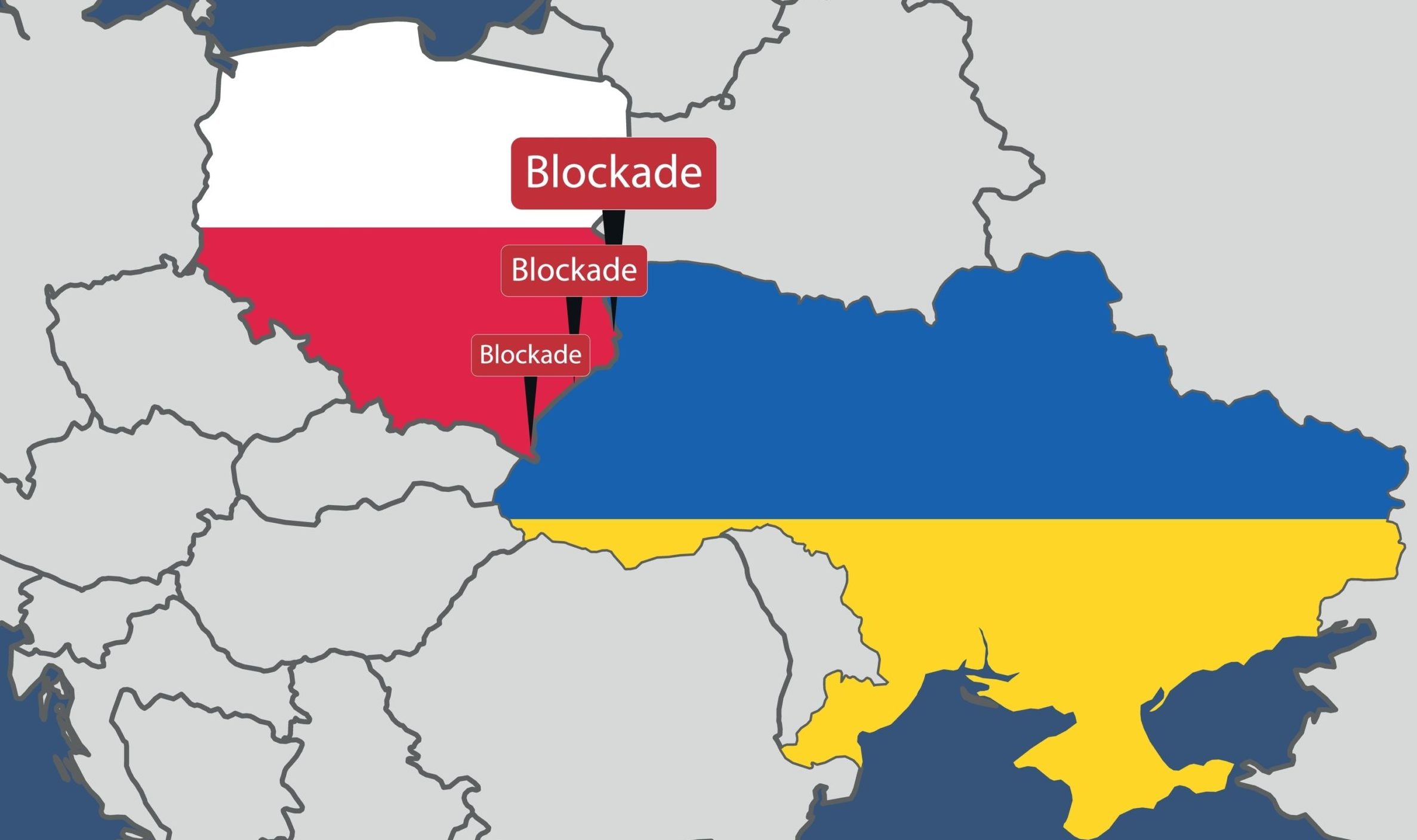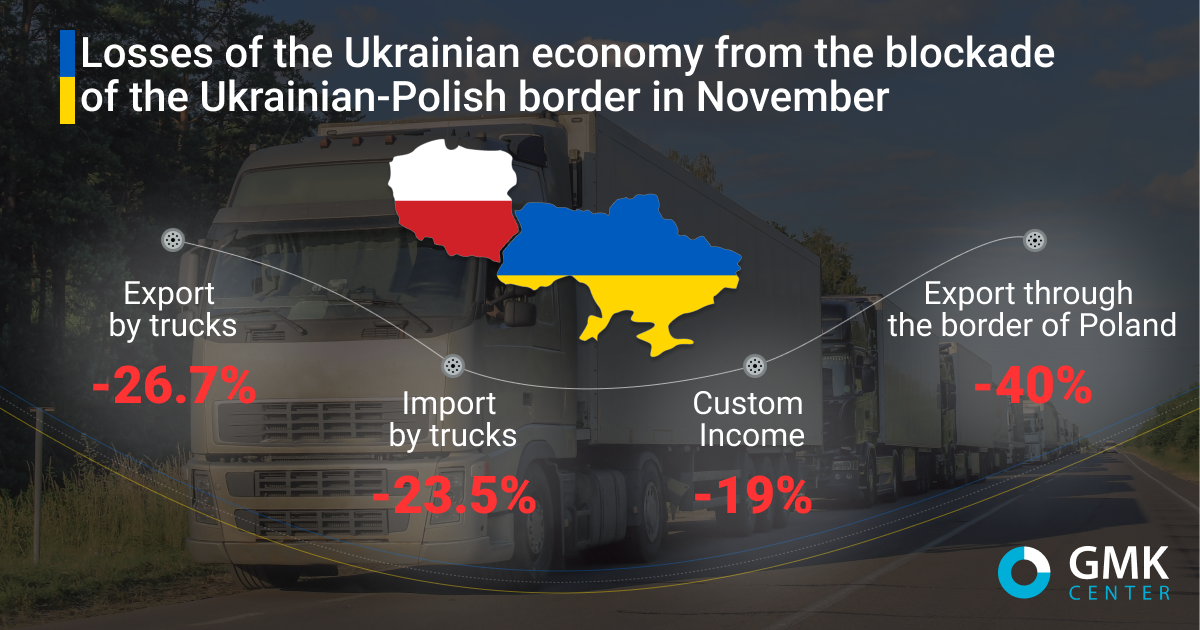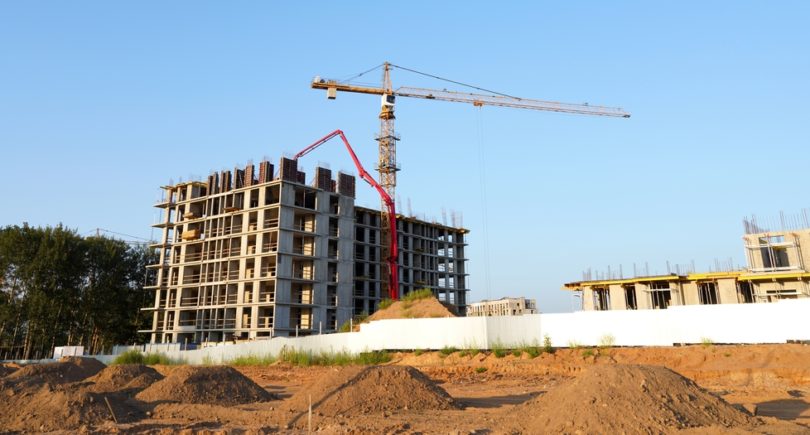
Posts Infrastructure cargo transportation 3104 06 December 2023
The total cost of protests by Polish transporters and farmers depends on the duration of the action, but threatens to be expensive
Since the outbreak of the war, Ukrainian exports have largely reoriented to European countries, and western border crossings have become the most important logistics hubs for Ukrainian exports and imports. In the first 10 months of 2023, the share of EU countries in Ukraine’s exports was 65% and imports 51%. That is why the blockade of road crossings on the border with Poland, which has been going on for a month now, has jeopardized a significant part of Ukraine’s foreign trade and, in the medium term, the entire stability of the country’s economy.
The price of blockade
The blocking of western road crossings has already had numerous negative consequences for Ukrainian businesses and their counterparties. The most prominent of these are a 3-4-fold increase in logistics costs, delays in deliveries, contractual disruption, and more, which has led to a rise in the price of many imported products. For example, prices for autogas at gas stations increased by 30% over the month, and imported construction materials by 5-10%. The continuation of the blockade could lead to a shortage of imported products, including those critical to the country’s defense.
«Тransportation costs are increasing significantly, which affects the cost of production and price competitiveness of companies. There is a change in routes, while queues at the Slovak and Hungarian borders are growing. Failure to fulfill obligations to Ukrainian and foreign customers will result in penalties from buyers, cancellation of further orders, and loss of customers. The inability to import the necessary raw materials or components poses risks to Ukrainian production facilities. All this directly affects the access of the population in Ukraine to the necessary goods and the smooth operation of enterprises,» the European Business Association (EBA) emphasizes.
Current estimates show that the blockade of border crossings has already resulted in huge financial losses: within one medium-sized company, we can talk about hundreds of thousands of hryvnias, and on a national scale – hundreds of millions of dollars. The financial and economic losses include the following:
- The blockade of the border led to a decrease in exports by motor vehicles in November by 26.7% – to 783 thousand tons, imports – by 23.5%, to 967.1 thousand tons. In general, in November, the volume of Ukrainian exports through the Polish border reduced by 40%.
- The Federation of Employers of Ukraine assessed losses of the Ukrainian economy approximately at €400 million as of November 22.
- According to EBA calculations, the average daily losses of the companies of the business association (exporters and importers) amount to UAH 1 million. For two weeks of the blockade, total losses exceeded UAH 300 million.
- According to Reuters estimates, the blockade may cost the Ukrainian economy 1% of GDP growth in case of prolongation of the protest action.
- Receipts from customs for November amounted to 81% of the plan – for an indicative indicator, UAH 48.5 billion in fact received UAH 39.2 billion.
The total cost of the blockade for the Ukrainian economy depends on the duration of the protest. According to the Ministry of Finance, Ukraine’s GDP was $161 billion in 2022. Therefore, a 1% decline in GDP in rough estimates means economic losses of more than $1.6 billion. If we assume that the losses in just two weeks of the blockade amounted to €400 million, by mid-December they will exceed €1 billion.

Given that in October, the NBU improved its GDP growth forecast for the current year to 4.9% from 2.9%, the Ukrainian economy may fall below 4% by the end of the year. Moreover, the negative effect of the blockade of the crossing points will be felt in the following years as long-term contracts are disrupted.
Interestingly, the blockade will also hit Poland itself, given its importance in Ukraine’s trade balance. Thus, in the first 10 months of this year, the share of Poland in the structure of Ukrainian imports amounted to $5.5 billion, or 10.5%.
The essence of the problem
The main reason for the blockade is to support the Ukrainian economy, which the EU tried to provide in the context of the war. Until 2022, all Ukrainian road carriers had to obtain a permit to cross the border with the respective EU country. However, the signing of an agreement between Ukraine and the EU on road freight transportation abolished the need to obtain permits on a permanent basis, meaning that Ukrainian road hauliers have free access to the EU market.
This agreement is valid until June 30, 2024, but Polish carriers started protesting much earlier. On November 6, they began blocking several road crossings. Later they were joined by Slovak drivers, who blocked the only truck crossing on their border, Vysne Nemecke-Uzhhorod. All of them were unhappy with the entry of Ukrainian carriers into the EU internal market with dumping tariffs for transportation services. However, the Slovaks quickly withdrew from the game – their blockade lasted from December 1 to 4.
It is important to understand that each participant in the blockade is trying to solve its own problems, which sometimes have nothing to do with Ukraine. For example, the blockade involves truck drivers who have lost the opportunity to work in the markets of Belarus and Russia due to the ban on Polish trucks entering these countries after a similar decision by Poland. In other words, they lost their jobs because of the decision of the Polish authorities, and Ukraine was made the last country to suffer. And the issue of price competitiveness is about the efficiency of the transportation business of European carriers, not about Ukraine.
However, the pinnacle of the absurdity was the fact that Polish farmers joined the blockade, whose demands are not even cursorily related to Ukraine. They expect the Polish authorities to pay extra to the purchase price of corn, to continue the program of cheaper lending, and to maintain the agricultural tax rate.
Negotiation positions
The Ukrainian authorities tried to resolve the issue with the protesters and the Polish authorities, but immediately stipulated that they would not discuss a return to the system of permits for road transportation. By the end of November, there had been no major progress in the negotiations.
In particular, the Polish authorities did not show proper activity in resolving the blockade problem – they called on Ukraine to fulfill the demands of carriers and planned to ask the EU to restore the system of cargo transportation permits for our country.
There are several reasons for this position.
- Poland has its own claims against the Ukrainian authorities, as well as against the officials of the European Union.
- After the October parliamentary elections in Poland, the procedure for the change of power is taking place.
The protesters and the Polish authorities are actually demanding the involvement of the EU authorities in the negotiations, since the decision to eliminate the system of permits for road transportation was made at the EU level. However, the European Commission is in favor of maintaining the «transport visa-free regime» for Ukraine.
First decisions
Despite the lack of a comprehensive positive outcome of the negotiations, there are first signs of solving some problems. The relevant ministries of Ukraine and Poland have developed the following measures to unblock the border:
- opening of the Ughryny – Dolgobychiv checkpoint for the passage of empty trucks;
- creation of separate lanes for empty trucks in the “ECherga” system at the Yagodyn – Dorogusk and Krakovets – Korchova checkpoints, where there are the necessary lanes on both sides of the border;
- launch of a pilot project with registration in the “ECherga” system immediately before crossing the border at the Nižankovići – Malhovići checkpoint for a period of one month.
The first compromise solutions have already been implemented – on December 4, the Ughryny – Dolgobychiv crossing point was opened for empty trucks. This is the end of the positive developments for now.
It is still unclear when and how the blockade will end and where the limit of the protesters’ crazy ambitions is, as they plan to continue the action until February 1, 2024. At the same time, the information component of the negotiations is partially non-public.
«We are actively working to resolve this situation. Not all of it can be public, because this publicity does not always play into the country’s hands. However, we have reason to hope that through this dialog on both sides we will be able to resolve the situation. Our diplomatic steps can be strengthened by exporters who have counterparties in Poland,» Yulia Svyridenko, First Vice Prime Minister – Minister of Economy, notes.
The protesters chose to launch the blockade at a time when a legal and partly political vacuum was created in Poland, which did not contribute to a quick solution to the acute problems. More effective participation of the Polish authorities in solving the blockade problem is possible after the formation of a new government, which will appear no earlier than the second half of December.





